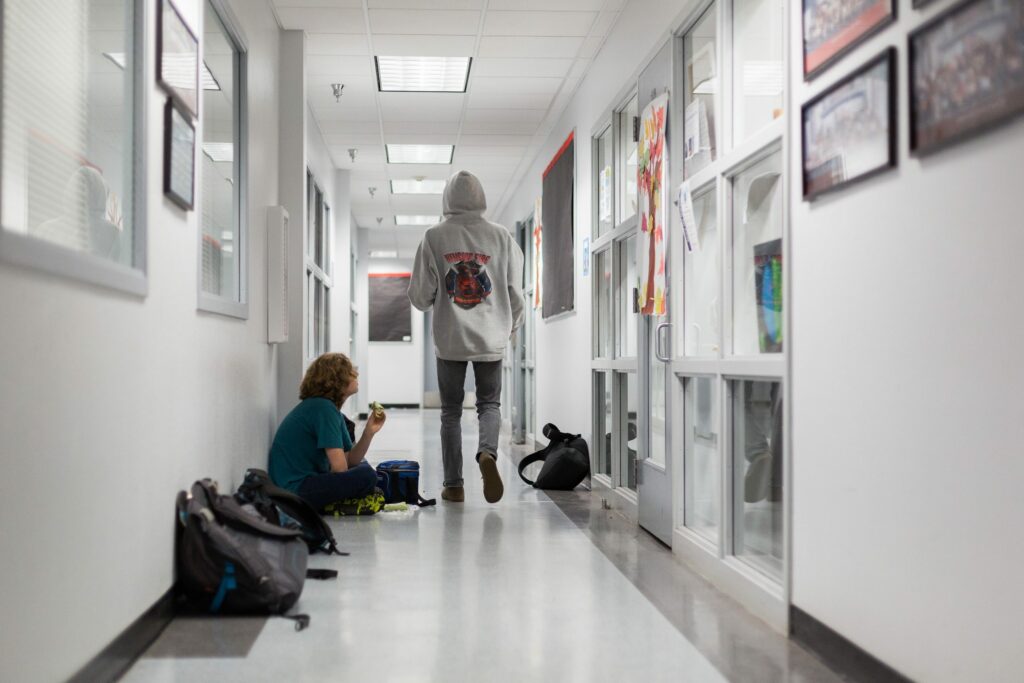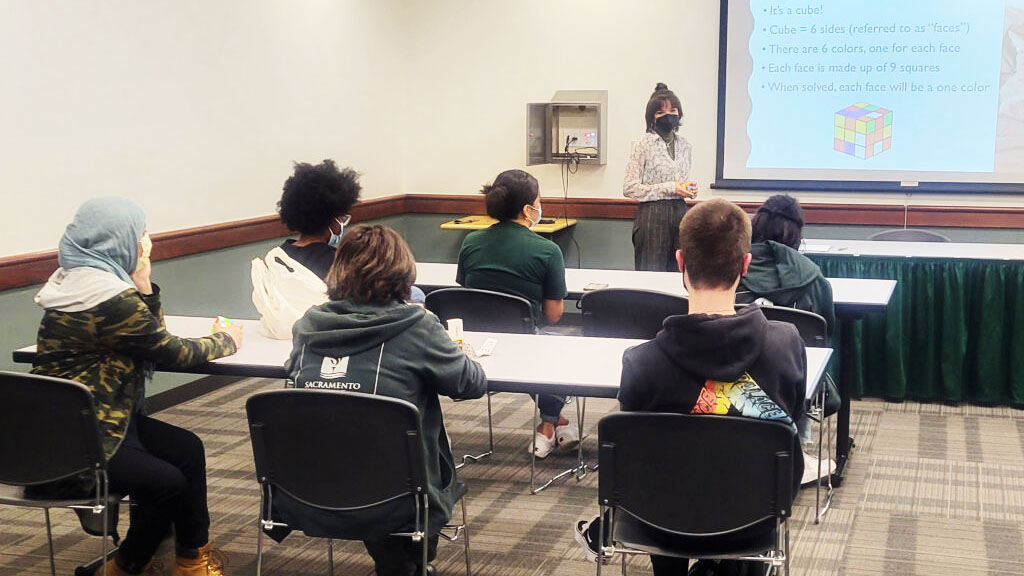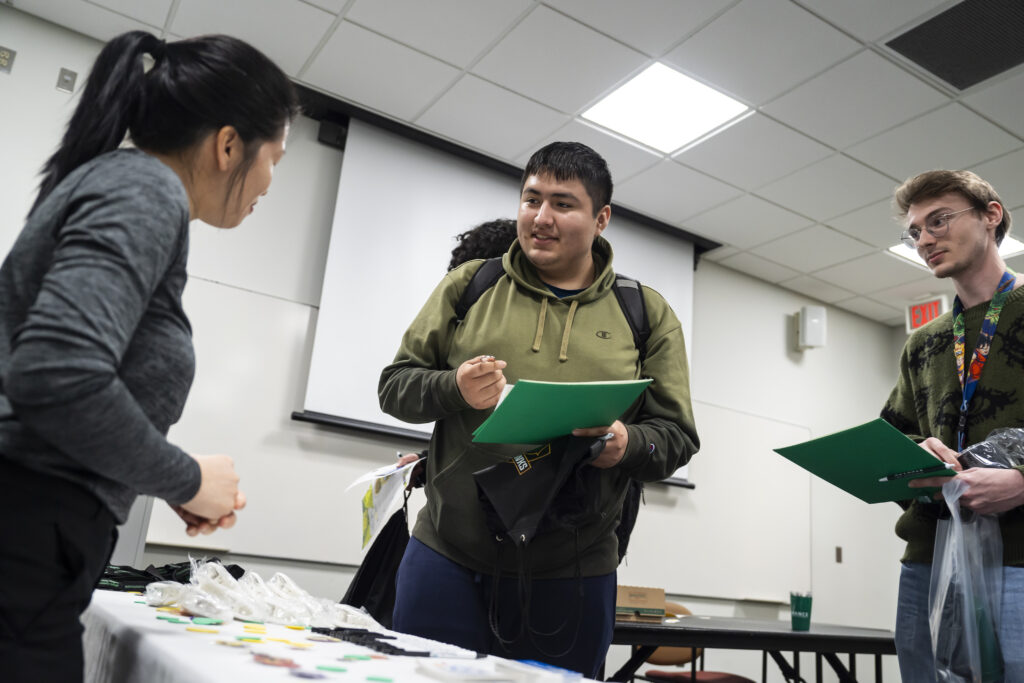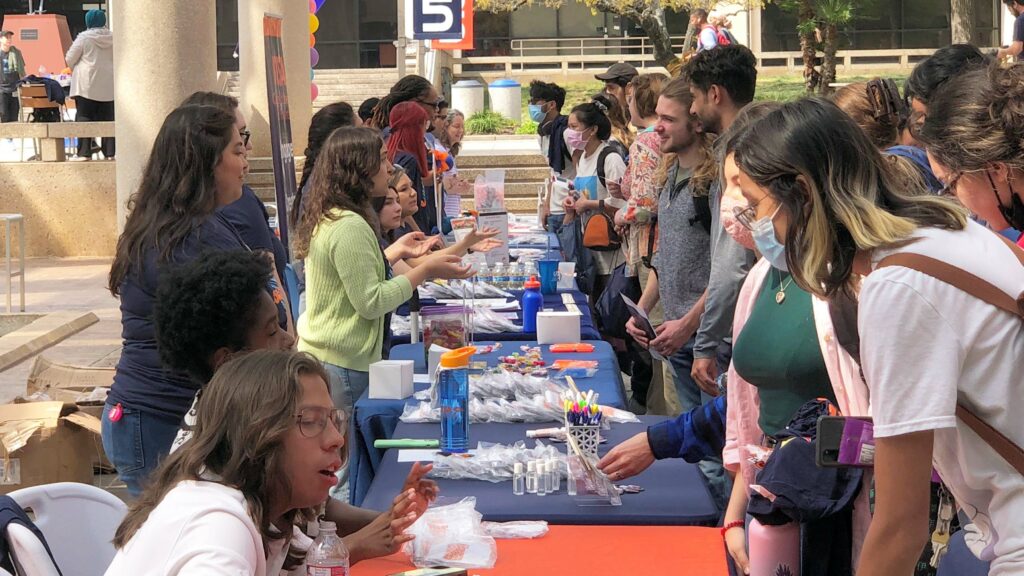
Photo by Alison Yin for EdSource
A UC Berkeley labor economist this week offered a California answer to the persistent question of whether more money matters for K-12 education.
Rucker Johnson, who researched the state’s decade-old school finance overhaul known as the Local Control Funding Formula, concluded it does matter, especially for the highest needs students targeted for help by the equity-based funding.
“The findings provide compelling evidence that school spending matters and providing additional resources to support high-need students pays dividends,” wrote Johnson, a professor of public policy at the Goldman School of Public Policy at UC Berkeley.
Those students’ performance rose significantly on a range of measures, Johnson wrote in “School Funding Effectiveness: Evidence From California’s Local Control Funding Formula,” released this week by the Learning Policy Institute.
The improvements were consistent across grades, subjects, and performance metrics, the research found. Johnson calculated that a $1,000 increase in per-student funding, sustained for three consecutive years in the highest-poverty districts, produced roughly a full grade-level increase in math and reading achievement for students in grades three through eight and 11, relative to what the average student achieved in the years preceding the formula’s passage in 2013.
It’s a big deal for students who started third grade a year behind in math to be at grade level by the end of fifth grade, he said.
Graphic note: Third graders’ test scores in math improved as they progressed through fifth grade while receiving increased funding from the Local Control Funding Formula. The vertical scale measures growth in math beyond a standard year of achievement (1.0 is a full extra year of additional growth, whether catching up to grade level or accelerating beyond it). The horizontal scale measures the percentage of high-needs students in a district, which determines how much bonus funding a district receives. The dotted line in the middle marks 55% of high-needs students, the point at which districts gradually begin receiving an extra dose of concentration funding. The blue line shows average academic growth for districts with 55% or fewer high-needs students. The red line shows the impact of districts’ concentration funding on academic growth. The dots signify groups of districts above and below average.
Johnson’s research focused from 2013-14, when the funding formula was introduced, through 2018-19, when the full funding targets were achieved. What mattered, he said, was not just the amount of the increase but the number of years in a row students benefited.
The Covid pandemic of 2020, with more than a year in remote learning for many districts, has wiped out most of the academic gains during this period, particularly among low-income Black and Hispanic students — despite record federal and state funding.
Did equity-based funding cause the improvement?
The Legislature included a number of major policy and accountability initiatives, along with providing more money, in the funding formula law. It required that districts and charter schools spell out how they planned to spend on high-needs students in a Local Control and Accountability Plan or LCAP and then measure the impact. The law defined high-needs students as English learners, homeless and foster youths, and low-income students — those qualifying for free or reduced school meals and other income-based government benefits.
The locally controlled funding formula introduced the color-coded California School Dashboard, which ranks districts’ performance on multiple measures in an effort to pressure districts to reduce suspensions and chronic absences and raise high-school graduation rates. In 2015, the State Board of Education ended the high school exit exam and switched to the Smarter Balanced tests to measure the newly adopted Common Core standards.
Johnson, however, wrote that new money, not new policies, caused the widespread gains in student performance “based on compelling evidence.” Another prominent researcher, however, said that the claim is overstated.
Johnson said he was able to isolate the impact of additional funding in two ways. The new funding formula’s distinct design, with concentrated funding for highest-needs districts, showed disproportionate gains in achievement. He could find no similar pattern of achievement in the decade preceding the new formula. Julien Lafortune, a research fellow at the Public Policy Institute of California, who also has studied the funding formula, agreed that is a fair conclusion.
Johnson also compared the achievement of districts funded by the Local Control Funding Formula with basic aid districts – the 100-some districts that received no funding under the Local Control Funding Formula because their funding from property taxes exceeded what they would have received from the state. Because there were no similar effects in student achievement among the basic aid districts that he found with Local Control Funding Formula districts during its rollout, Johnson concluded more funding must be the cause.
That comparison is problematic because the majority of basic aid districts are small, wealthy residential communities with few low-income families. They include Palo Alto, Saratoga, Santa Clara and San Mateo Union High School District in the Bay Area, and Santa Barbara, Newport Mesa, and San Dieguito Union High School District in Southern California. Graduation rates and test scores generally were already above average in those districts, and suspension rates were already lower than in high-poverty districts.
“The correlation of LCFF funding with poverty is at the extreme with the basic aid districts,” said Eric Hanushek, an economist and senior fellow at the Hoover Institution at Stanford University, who has written extensively on education financing. Johnson “makes an admirable attempt to parse the impact of LCFF funding, but this is an exceedingly difficult task. He cannot convincingly separate pure spending changes from the host of other changes in California schools at that time.”
The study did not cite the number of districts that received $1,000 per student in additional funding, sustained over three years, and, therefore, how many students should have gained approximately a year in academic growth. A graph showing yearly Local Control Funding Formula funding increases during this period indicated that many districts benefited by at least that amount. Some districts with the largest numbers of high-needs students received more than $2,000 more per student over the three years.

Funding for the Local Control Funding Formula increased annually after its adoption in 2013. Districts with more than 55% high-needs students received increased amounts of funding, called concentration grants.
But Johnson said the exact number of students whose math and reading scores grew the equivalent of a grade was not calculated because of the methodology and parameters he used. The research was more precise than looking at the unfiltered year-over-year results of all students. It eliminated students who transferred schools during the period and took into account parental socioeconomic status and race/ethnicity. Its specific parameters compared:
- Students from the same school across cohorts evaluated at the same grade.
- Students from the same school and same kindergarten cohort across successive grades.
- Student achievement growth among students from the same cohort and same grade across districts.
Local Control Funding Formula reconsidered
Gov. Jerry Brown, who championed the funding overhaul, made it clear he wanted the funding formula to roll out without interference from the Legislature and would veto any modifications to the law as long as he was in office. Gov. Gavin Newsom has proven more receptive to changes out of recognition that the law has flaws and its implementation has been uneven. Districts receiving the same funding per student have shown wide variations in student performance. That’s because, Lafortune noted, the Legislature sets the rules on funding, but districts decide how to spend it.
Last year, Pivot Learning, a national nonprofit that works with school districts on improving classroom instruction, created a District Readiness Index that measures conditions like family and community engagement, principal retention, and work environment, which can determine districts’ success with programs and investments. In 2019, the Learning Policy Institute, the Palo Alto-based research and education policy nonprofit that published Johnson’s research, produced California’s Positive Outliers: Districts Beating the Odds. It identified districts that excelled and why.
Advocacy nonprofits like Public Advocates argued for a decade that the Local Control Accountability Plan rules and Local Control Funding Formula law did not require districts to be transparent enough on how they spent money for high-needs students, who make up about 60% of California students. Newsom included one important transparency change in the 2021 state budget, prohibiting districts from transferring unspent funding for high-needs students to the general fund.
Recognizing that Covid intensified the disparities facing high-poverty areas, Newsom increased funding for districts with the greatest concentrations of high-needs students from 50% of base funding to 66%. Acknowledging the Local Control Funding Formula’s district-centric approach has not narrowed the achievement gap, Newsom created an “equity multiplier” in this year’s budget. It includes an additional $300 million in ongoing money for the high-poverty schools and requires that districts create mini-Local Control Accountability Plans with goals and actions to improve the lowest-performing schools. Until now, the formula allocated funding only by districts.
Lafortune said that Johnson’s research is an important contribution to the effort to evaluate the formula.
“I don’t think school finance formula should exist in stone because the conditions that are affecting schools are changing,” he said. “But now that we have evidence that funding targeted in high-concentration districts on average seems to be making a difference, the question becomes how to equitably deploy the funding everywhere.”
How the funding formula works
Gov. Jerry Brown and Michael Kirst, his longtime education adviser and state board president, said the Local Control Funding Formula made equitable funding a priority. On top of base funding per student, the formula gives districts and charter schools an additional 20% for each high-needs student.
The Legislature then gave an added boost to those districts with high proportions of those students, called concentration grants, based on research that high-poverty neighborhoods compounded challenges that children experience.
The concentration funding kicked in gradually once high-needs students made up 55% of a district’s enrollment. The differential could be significant. While districts with 40% high-needs students received an additional 8% funding, those with 85% high-needs students, like Los Angeles Unified, received 32% funding above the base.
In the decade preceding the new formula, California consistently ranked in the bottom of the states in per-student funding, adjusted for regional costs, according to the report. In 2011, in the aftermath of the Great Recession, it ranked last. Data from the National Assessment of Educational Progress showed California’s socioeconomic achievement gaps were among the largest in the nation, the report said.
Faced with Brown’s threat to cut education funding severely without additional revenue, voters in 2012 passed a temporary sales tax and income tax on the top 1% of wage earners. Base funding per student rose from under $6,000 in 2013-14 to more than $8,000 in 2018-19, adjusted by grade span. Districts like Paramount Unified in Los Angeles County, with 95% high-needs students, received nearly $12,000 per student in local control funding.
Johnson found sizable improvement in other performance measures besides higher math and reading scores in high-concentration districts.
- LCFF concentration funding increased the likelihood that students would graduate from high school by 8.2 percentage points for students exposed to a $1,000 increase in the average per-pupil spending experienced from grades nine to 12.
- By a 9.8 percentage-point increase in math and 14.7 percentage-point increase in reading, students were more likely to meet college readiness standards, as measured by the 11th-grade Smarter Balanced tests.
- By a 5 to 6 percentage-point reduction for boys and 3 percentage-point reduction for girls, Local Control Funding Formula-induced increases in school spending led to significant reductions in annual suspensions and expulsions across third to 10th grades. Suspensions for Black students in 10th grade were cut by 8 percentage points in schools benefiting from $1,000 in Local Control Funding Formula increases for three consecutive years.
Lafortune said Johnson’s research was consistent with his own findings comparing the academic growth of districts receiving the most local control funding — those with more than 80% high-needs students — with districts with fewer than 30% high-needs students. Another report will be published next month.
“I’m happy to see there’s actually some good research out using student-level data with evidence in answer to the top-level question, Is (the formula) moving the needle? Yes, for those high-concentration districts,” he said.
An EdSource examination of growth in Smarter Balanced scores for the years of Johnson’s study shows slow but steady progress for both low-income and non-low-income students. Both groups of students grew by an average of slightly more than 1 percentage point annually in math and slightly less than 2 percentage points in English language arts. After five years, the achievement gap remained nearly identical, about 30 percentage points apart.
“Yes, we do care about the gaps, but our idea of equity is not to bring the children that are performing really well to the levels that are not excellent,” said Johnson. The overall gains are evidence that more money matters for all students, he said, adding that the aggregate averages don’t reflect his research of districts receiving the biggest dose of funding.
Lafortune said that the overall averages also reflect that low-income students are spread throughout the state. A fifth — about 800,000 students — attend wealthy districts that get no concentration funding. More than 40% of non-low-income students attend districts that receive concentration funding, he said.





















